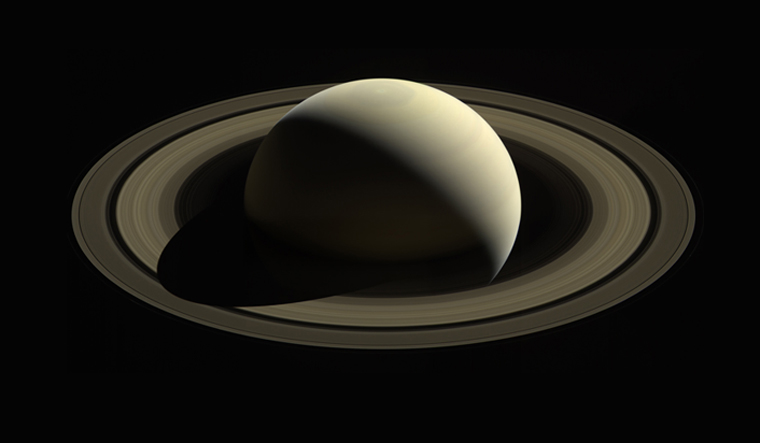Mysterious straight bright stripes have been discovered on Saturn's moon Dione, scientists said Thursday.
The origins of these linear virgae or stripes are most likely caused by the draping of surface materials like material from Saturn's rings, passing comets, or co-orbital moons Helene and Polydeuces, according to the study published in the journal Geophysical Research Letters.
"The evidence preserved in the linear virgae has implications for the orbital evolution and impact processes within the Saturnian system," said Alex Patthoff from the Planetary Science Institute in the US.
"The interaction of Dione's surface and exogenic material has implications for its habitability and provides evidence for the delivery of ingredients that may contribute the habitably of ocean worlds in general," Patthoff said.
Patthoff and Emily S Martin from the National Air and Space Museum, studied images from NASA's Cassini spacecraft, which also revealed similar features on Saturn's moon Rhea.
Dione's linear virgae are generally long (10 to 100s of kilometers), narrow (less than 5 kilometers) and brighter than the surrounding terrains, researchers said.
The stripes are parallel, appear to overlie other features and are unaffected by topography, suggesting they are among the youngest surfaces on Dione.
"Their orientation, parallel to the equator, and linearity are unlike anything else we have seen in the solar system," Patthoff said.
"If they are caused by an exogenic source, that could be another means to bring new material to Dione. That material could have implications for the biological potential of Dione's subsurface ocean," Patthoff said.


